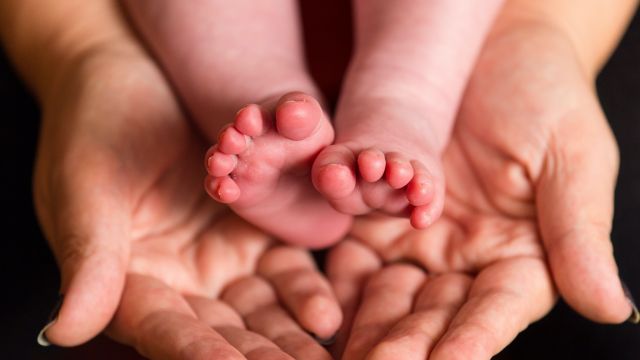Research published in The BMJ found that the chances of pregnancy are no higher among women who have a frozen embryo transfer over a fresh one.
They said that fresh transfers should be the “gold standard” in assisted reproduction techniques such as IVF.
But this should only be among women who are not at risk of ovarian hyperstimulation syndrome – a common side effect to the drugs needed for IVF.
The findings warrant caution in the indiscriminate application of a freeze-all strategy when no apparent risk of ovarian hyperstimulation syndrome is present
Researchers conducted a multi-centre analysis of 460 women undergoing assisted conception treatments in clinics in Denmark, Sweden and Spain.
The women, aged between 18 and 39, all had regular menstrual cycles and were starting their first, second or third treatment cycle of in vitro fertilisation or intracytoplasmic sperm injection (ICSI).
After women’s eggs were collected and mixed with sperm in a laboratory – or in the case of ICSI, a single sperm is injected into a single egg – the fertilised eggs are left to continue to grow in a laboratory for a number of days.
In a fresh embryo transfer, a few days after the eggs are collected, the embryos are transferred into the womb.
With frozen embryo transfers, the newly formed embryos are frozen and thawed at a later date for use.
Women either underwent treatment with fresh or frozen embryo transfer.
They were then followed up to see whether they had fallen pregnant.
The authors found that pregnancy rates did not significantly differ between the groups – 27.8% of those who froze their embryos fell pregnant compared with 29.6% who had a fresh transfer.
#Eggfreezing is becoming more and more popular. ❄
Egg storage cycles increased by 240% from 569 to 1,933 in 2018.
To find out more about egg freezing, visit our website 👉 https://t.co/NU49QRZTTl pic.twitter.com/kKaEJ2lJzD— HFEA (@HFEA) July 30, 2020
And no significant difference was found between the live birth rates between the two different groups.
The authors, led by researchers from Hvidovre University Hospital in Copenhagen, Denmark, wrote: “The findings warrant caution in the indiscriminate application of a freeze-all strategy when no apparent risk of ovarian hyperstimulation syndrome is present.”
They added that “a safe fresh embryo transfer strategy can be applied to women with regular menstrual cycles” but cautioned that those who become at risk of ovarian hyperstimulation should have their embryos frozen to avoid risk of the condition.
Ovarian hyperstimulation syndrome is a rare complication of IVF.
It occurs in women who are very sensitive to the fertility medication taken to increase egg production.
Too many eggs develop in the ovaries, which become very large and painful.







